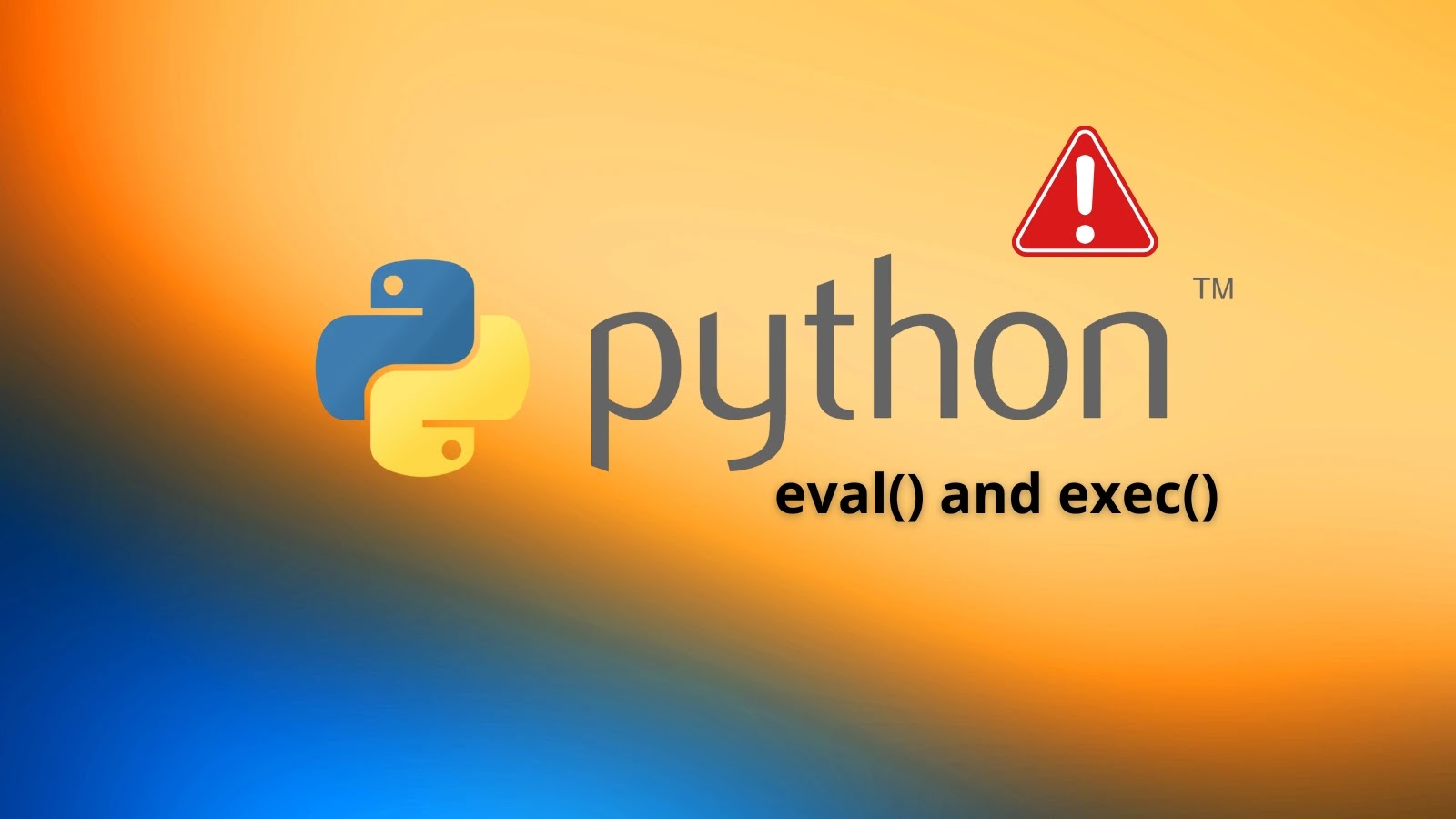
Hackers Can Exploit (eval) or (exec) Python Calls to Execute Malicious Code
The Silent Threat: How Python’s eval() and exec() Become Hacker Backdoors
Organizations worldwide increasingly leverage Python for its versatility, from web development to data science. However, this widespread adoption also makes Python a prime target. Recent reports highlight a sophisticated, insidious obfuscation technique where threat actors weaponize Python’s built-in eval() and exec() functions, transforming them into stealthy backdoors for malicious code execution. This technique bypasses traditional detection systems, posing a significant risk, especially given the over 100 supply chain attacks reported on PyPI in the past five years.
Understanding eval() and exec(): Powerful Tools, Dangerous Weapons
Python’s eval() and exec() functions are incredibly powerful. eval() parses and evaluates a Python expression from a string, returning the result. exec(), on the other hand, executes dynamically created Python code. While invaluable for tasks like dynamic configuration loading or meta-programming, their ability to execute arbitrary code makes them a double-edged sword. In the hands of a malicious actor, they become direct conduits for remote code execution (RCE).
Threat actors are exploiting these functions by embedding malicious code in seemingly innocuous Python packages. They use advanced obfuscation techniques, often involving multiple layers of encoding, encryption, and unusual string manipulations, to hide the true nature of the code. This makes it exceedingly difficult for static analysis tools or even human reviewers to identify the malicious payload until it’s too late.
The Obfuscation Game: Hiding Malice in Plain Sight
The core of this attack vector lies in the clever obfuscation. Instead of directly writing dangerous commands, attackers will:
- Break down malicious payloads into small, seemingly random strings.
- Use legitimate Python functions (e.g.,
base64.b64decode(),zlib.decompress()) to decode or decrypt portions of the payload at runtime. - Employ highly nested or convoluted expressions that eventually reconstruct the attack code.
- Dynamically import modules or access built-in functions via string manipulation, further obscuring their intent.
This approach leverages the Python interpreter itself to “unpack” the malicious code right before execution, effectively bypassing signature-based detection and many static analysis tools. The threat often materializes as part of a software supply chain attack, where compromised or malicious packages are uploaded to public repositories like PyPI.
Real-World Impact: Supply Chain Vulnerabilities and Data Breaches
The statistics are stark: over 100 supply chain attacks targeting PyPI have been reported in the last five years. Each successful compromise poses a direct threat to organizations that integrate these packages into their development pipelines or production environments. A malicious eval() or exec() call, once triggered, can lead to:
- Data Exfiltration: Sensitive data, credentials, or proprietary information stolen from the compromised system.
- Unauthorized Access: Creation of new user accounts, installation of backdoors, or elevation of privileges.
- System Compromise: Installation of ransomware, cryptominers, or other malware.
- Lateral Movement: Exploiting the compromised system as a pivot point to attack other internal systems.
While specific CVEs directly tied to malicious eval()/exec() *usage* are rare (as it’s often a technique leveraging legitimate functionality rather than a software flaw), the broader category of supply chain vulnerabilities it exploits is critical. For instance, vulnerabilities like CVE-2022-26487 (related to arbitrary file write in a Python package), or CVE-2021-39147 (unsafe deserialization in a Python library), highlight the pervasive risk of untrusted code execution within the Python ecosystem.
Remediation Actions and Best Practices
Mitigating the risk posed by malicious eval() and exec() calls requires a multi-layered approach:
- Supply Chain Security:
- Audit Dependencies: Regularly audit your project’s dependencies for known vulnerabilities and suspicious activity. Use tools like dependabot or pyup.io.
- Trusted Sources: Whenever possible, prefer well-maintained, reputable packages from trusted sources.
- Pin Dependencies: Use strict version pinning for all dependencies to prevent automatic updates to potentially compromised versions.
- Automated SCA: Implement Software Composition Analysis (SCA) tools in your CI/CD pipeline to scan for vulnerabilities and suspicious code patterns in third-party libraries.
- Code Review and Static Analysis:
- Manual Code Review: Conduct thorough code reviews, especially for any new or updated dependencies, looking for unusual string manipulations, excessive obfuscation, or unnecessary use of
eval()orexec(). - Advanced Static Analysis: Employ static analysis tools that can detect complex obfuscated code or suspicious runtime behavior. Look for tools that can reconstruct code execution paths.
- Manual Code Review: Conduct thorough code reviews, especially for any new or updated dependencies, looking for unusual string manipulations, excessive obfuscation, or unnecessary use of
- Runtime Protection:
- Web Application Firewalls (WAFs): While not directly preventing the execution of malicious Python code, WAFs can help block suspicious network outbound connections initiated by compromised applications.
- Endpoint Detection and Response (EDR)/Extended Detection and Response (XDR): These tools can detect anomalous process behavior, file system changes, or network communications that might indicate a successful malicious execution.
- Restrict Server Permissions: Ensure your Python applications run with the least privileges necessary. This minimizes the damage if malicious code is executed.
- Developer Education:
- Educate developers about the dangers of
eval()andexec()when used with untrusted input. Emphasize secure coding practices. - Encourage awareness of social engineering tactics that might lead to installing compromised packages.
- Educate developers about the dangers of
Relevant Security Tools
| Tool Name | Purpose | Link |
|---|---|---|
| Bandit | Python static analysis tool for finding common security issues. | https://pyup.io/security/bandit/ |
| OWASP Dependency-Check | Analyzes project dependencies for known vulnerabilities. | https://owasp.org/www-project-dependency-check/ |
| Snyk | Developer security platform for finding and fixing vulnerabilities in code, dependencies, and containers. | https://snyk.io/ |
| Sonatype Nexus Lifecycle | Software supply chain automation for open source governance and risk management. | https://www.sonatype.com/products/nexus-lifecycle/ |
Conclusion: Stay Vigilant, Protect Your Python Assets
The threat landscape surrounding Python’s eval() and exec() functions highlights a critical evolution in attacker tactics. Their ability to deliver highly obfuscated, malicious payloads through seemingly legitimate channels demands heightened vigilance. Proactive supply chain security, rigorous code review, advanced static analysis, and robust runtime protection are no longer optional they are imperative. By understanding these sophisticated obfuscation techniques and implementing comprehensive security measures, organizations can significantly reduce their exposure to this silent, yet potent, threat, safeguarding their Python applications and underlying infrastructure.





